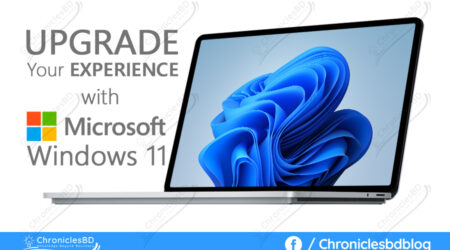The Evolution of Microsoft Windows
Jakaria2023-03-10T03:28:13+06:00Microsoft Windows is one of the most extensively used operating systems in the world. It was first introduced in 1985 and since then has undergone several changes and updates to keep up with the changing needs of users.
Windows, an operating system which is developed by Microsoft Corporation. It is the most widely used operating system in the world, with an estimated 1.3 billion active users as of 2021. The popularity of Windows can be attributed to its user-friendly interface, ease of use, and wide range of software applications that are compatible with the system.
Evolution of Windows
In this article, we will explore the evolution of Windows, from its early days to the latest version of the operating system.
• Windows 1.0: Released in 1985, Windows 1.0 was the first version of the Windows operating system. It featured a graphical user interface (GUI) and support for multitasking. However, it was not widely adopted due to its high system requirements and limited software compatibility.
• Windows 2.0: Released in 1987, Windows 2.0 introduced support for VGA graphics and expanded memory support. It also featured a new version of the Windows Control Panel and improved printing support.
• Windows 3.0: Released in 1990, Windows 3.0 was a major milestone for the Windows operating system. It introduced the Program Manager and File Manager, which made it easier to navigate and manage files and programs. It also included support for TrueType fonts and improved multimedia capabilities.
• Windows 95: Released in 1995, Windows 95 was a groundbreaking release for Windows. It featured the iconic Start menu and Taskbar, which made it easier to launch and manage programs. It also introduced support for Plug and Play hardware and long filenames.
• Windows 98: Released in 1998, Windows 98 included several improvements to the operating system, including better support for USB devices and improved system stability. It also introduced Internet Explorer 4.0 and support for DVD drives.
• Windows 2000: Released in 2000, Windows 2000 was aimed at the business market and introduced several new features, such as support for Active Directory and improved networking capabilities. It also featured improved stability and security compared to previous versions of Windows.
• Windows XP: Released in 2001, Windows XP was one of the most popular versions of Windows. It featured a revamped user interface and introduced the Windows Security Center, which made it easier to manage security settings. It also included support for wireless networking and multimedia improvements.
• Windows Vista: Released in 2006, Windows Vista was a major overhaul of the Windows operating system. It introduced the Aero user interface and improved search capabilities. However, it was criticized for its high system requirements and compatibility issues with older software.
• Windows 7: Released in 2009, Windows 7 was a popular release of the Windows operating system. It introduced several new features, including the ability to pin programs to the Taskbar and improved support for touchscreens. It also included several improvements to performance and stability.
• Windows 8: Released in 2012, Windows 8 was designed with touchscreens in mind. It introduced the Start screen, which replaced the Start menu, and included support for new hardware, such as tablets and hybrid devices. However, it was criticized for its radical departure from the traditional Windows interface.
• Windows 10: Released in 2015, Windows 10 was a significant improvement over Windows 8. It reintroduced the Start menu and included several improvements to the user interface, such as the ability to create virtual desktops. It also included support for new technologies, such as Cortana and the Microsoft Edge browser.
• Windows 11: Released in 2021, Windows 11 is the latest version of the Windows operating system. It features a redesigned Start menu, improved multitasking capabilities, and a new look and feel. It also includes several new features, such as support for Android apps and improved support for gaming.
Conclusion
In conclusion, the evolution of Windows has been marked by significant milestones and improvements over the years. From the early days of Windows 1.0 to the latest version of Windows 11, the operating system has undergone many changes and transformations, adapting to the changing needs and demands of users and businesses alike. Each new version of Windows has introduced new features and capabilities, making it easier and more efficient for users to manage their files and programs, connect to the internet, and perform everyday tasks. Today, Windows remains one of the most popular and widely used operating systems in the world, powering millions of devices and enabling users to work, play, and communicate in ways that were once unimaginable. As technology continues to evolve, it is clear that Windows will continue to play an important role in shaping the future of computing and digital innovation.
Share on Socials!
Facebook
Twitter
Telegram
Pinterest
Tumblr
WhatsApp
Email
Post Views: 52













Leave a Reply